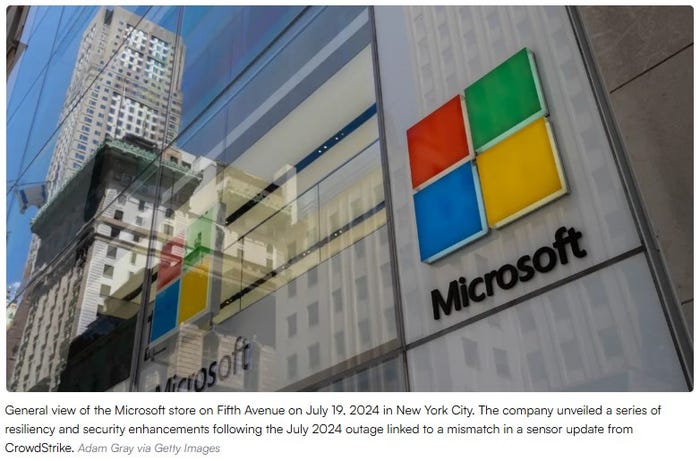Using crystal filters at VHF high band
One of the principal drawbacks of crystal filters is their inherently high insertion loss. This column examines how such filters can be used and how to
January 1, 2004
One of the principal drawbacks of crystal filters is their inherently high insertion loss. This column examines how such filters can be used and how to minimize the impact of the high insertion loss. Several examples will be shown, with comparisons of the various aspects of each.
Example 1 Figure 1 below shows a simple arrangement with an antenna, transmission line and receiver. In this example, and those that follow, the transmission line loss is 2dB and the receiver has a noise figure of 9.2dB (0.25mV sinad sensitivity). In each example, the effect of antenna noise figure (noise temperature) on system noise figure will be shown at antenna noise figures of 3dB, 10dB and 15dB. Such figures aid in analyzing the overall system noise figure under various site noise conditions.
Notice in Figure 1 that as the noise figure of the antenna increases, the overall system noise figure approaches the antenna noise figure. This is because the noise figure of the first device in a receiving chain has a dominant effect on the overall system noise figure. This is the reason for using low-noise, tower-top amplifiers. A low noise figure, along with gain, has a more pronounced effect on lowering the overall system noise figure.
Example 2 Figure 2 below shows a highly selective, four-pole crystal filter, with an insertion loss of 8dB, inserted in the receiving chain just ahead of the receiver. Compare the overall noise figures at various antenna noise figures with the example in Figure 1. Note that the overall noise figures (even with low antenna noise figure) are significantly higher due to the insertion loss of the crystal filter. An amplifier can be used to compensate for the insertion loss of the crystal filter. The next two examples study the effects of placing the amplifier before and after the crystal filter.
Example 3 In Figure 3 on page 46, a low-noise amplifier is placed between the crystal filter and the receiver input. The amplifier has a noise figure of 1.5dB, a gain of 15dB (and a third-order intercept point of 30dB). Compare the overall system noise figure of this arrangement with the system noise figures shown in Figures 1 and 2. There is a significant improvement over the arrangement in Figure 2. Note that the overall system noise figures are not significantly worse than those shown in Figure 1-especially at the higher antenna noise figures. Thus, the amplifier has practically negated the negative effect of the crystal filter’s insertion loss on overall system noise figure.
Example 4 In Figure 4 on page 46, the amplifier has been placed in front of the crystal filter in an effort to further improve the system noise figure. Compare the system noise figures with those in the previous examples. The effect is significant. At an antenna noise figure of 3dB, the overall system noise figure is now 7.64dB. This is almost 5dB better than in Figure 3 and almost 4dB better than in Figure 1. However, as the antenna noise figure increases, the differences in system noise figures are less significant.
Amplifier placement As shown, the placement of the amplifier in the receiving chain may or may not make a significant difference, depending on the antenna noise figure or site noise level. At low antenna noise figures, the amplifier makes a greater improvement as it is placed closer to the antenna. In such cases, a tower-top amplifier would yield maximum benefit. However, as the site noise increases, causing the antenna noise figure to rise, the relative position of the amplifier in the receiver chain is less important.
If the amplifier is placed ahead of the crystal filter, the susceptibility to interference will be increased. Strong, off-channel signals could be increased to the point of causing receiver desense; intermod becomes a greater possibility.
In Figure 5 on page 48, the amplifier is placed before the crystal filter. Assume that the frequency relationship between two signals (A and B) and the receiver frequency is such that 2A 2 B is equal to the receiver frequency. Again, the amplifier has a gain of 15dB and a third-order intercept point of 130dBm. If signal A is at 0dBm and signal B is at 220dBm at the amplifier input, then the third-order intermod signal (2A 2 B) at the amplifier output will be 280dBm. The insertion loss of the crystal filter (8dB) would put the intermod signal at 288dBm at the receiver input. This would certainly cause destructive interference.
In Figure 6 on page 48 the position of the amplifier and crystal filter has been reversed. Now, with the filter preceding the amplifier, the levels of signals A and B are much reduced by the selectivity of the filter. Assuming a 60dB reduction, signal A is now at 260dBm and signal B is at 280dBm at the amplifier input. Now, the intermod signal (2A 2 B) is at 2260dBm at the receiver input.
Obviously, such a low-level intermod signal could do no harm.
Summary >From this discussion, it is apparent that noise and interference levels must be taken into account when designing the receiver system chain. The arrangement that will produce the best system noise figure may not be practical in the presence of certain interfering signals. Usually, when a crystal filter is needed, the site is already heavily laden with noise and interfering signals. If this is the case, there are fewer choices in the design of the receiver chain.
Although the crystal filter referenced here had an insertion loss of 8dB, there are crystal filters available with less insertion loss. Generally speaking, the lower the insertion loss, the fewer the number of poles in the filter. And, the fewer the number of poles, the poorer the selectivity. Do not rule out a crystal filter based simply on the insertion loss. Study the entire receiver chain on the basis of system noise figure, taking into account the ambient site noise or antenna noise figure.
Until next time-stay tuned!



